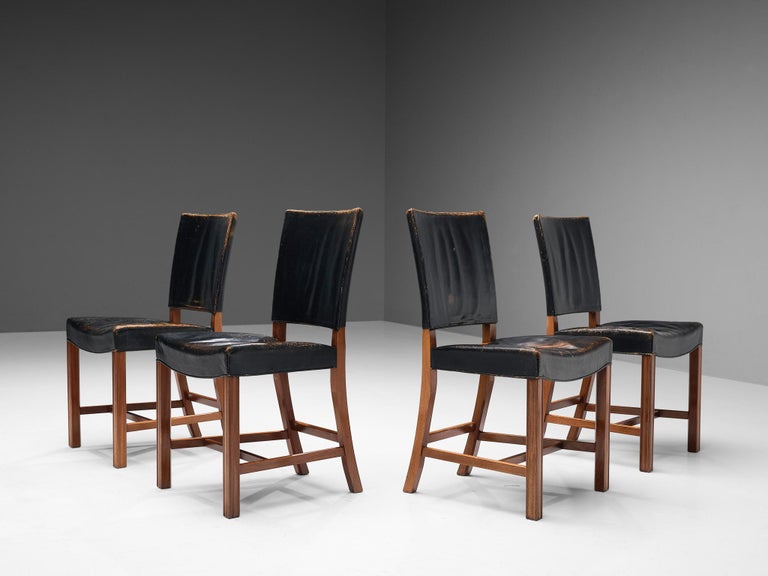
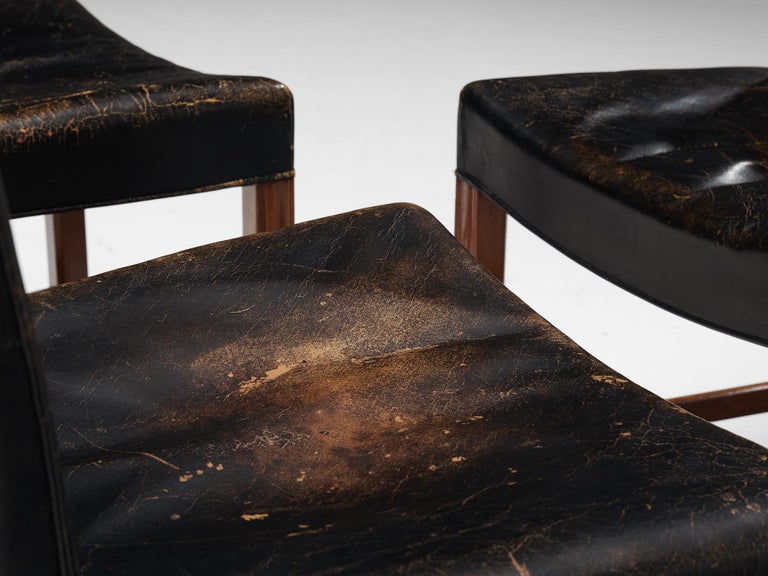
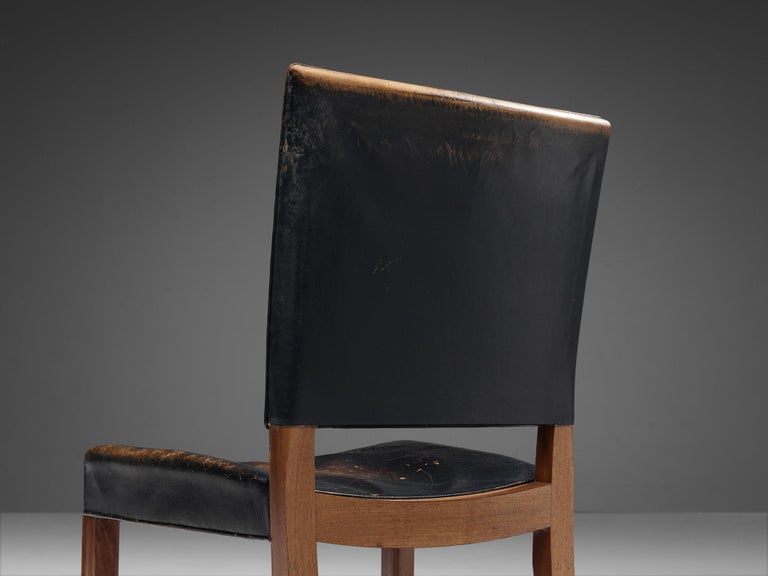
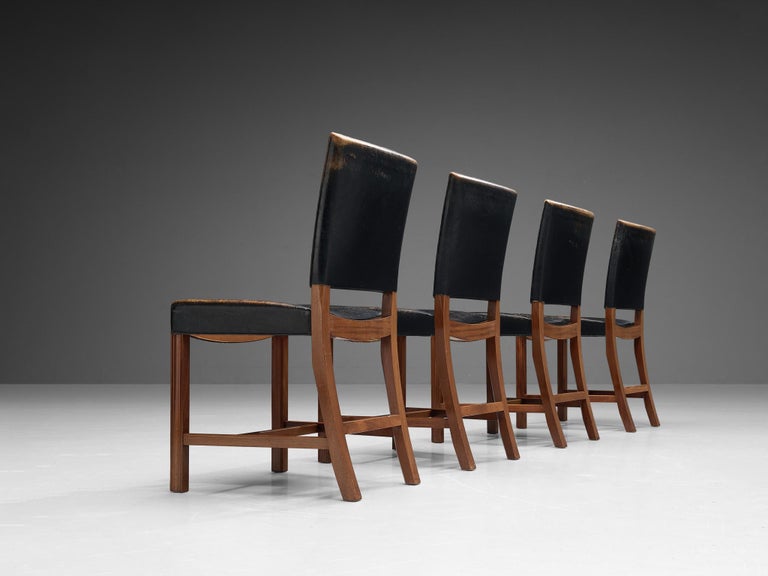
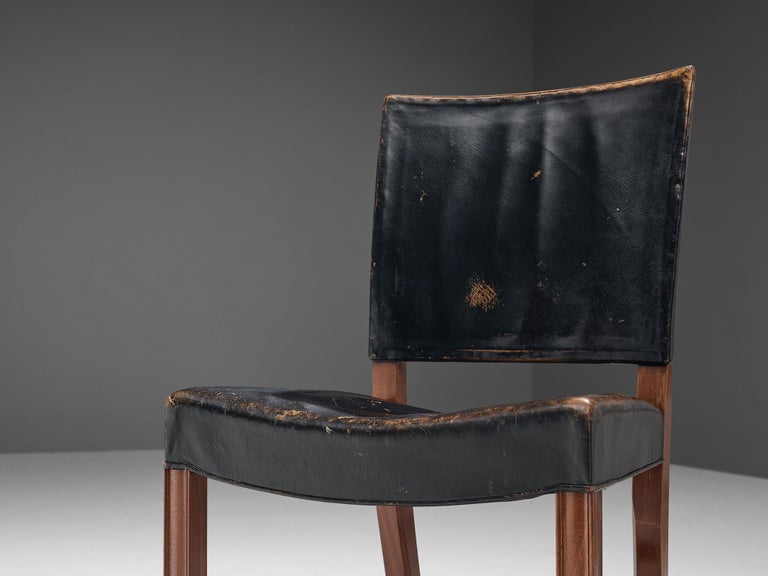
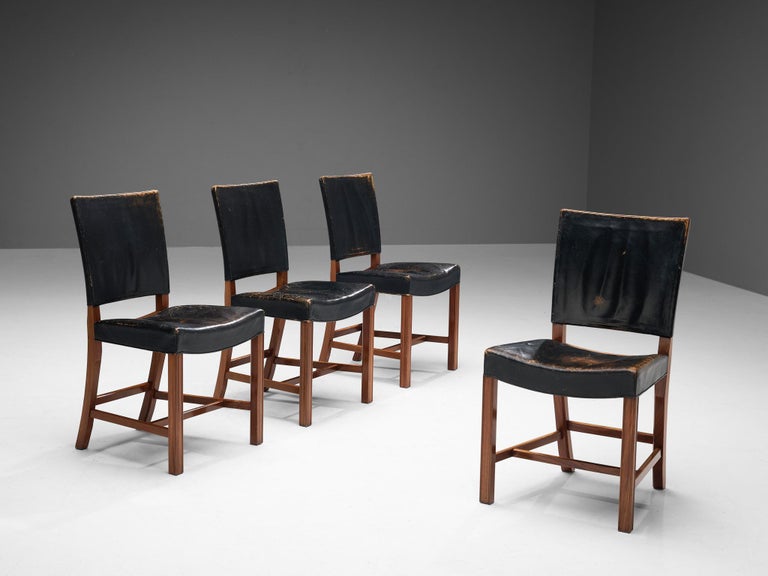
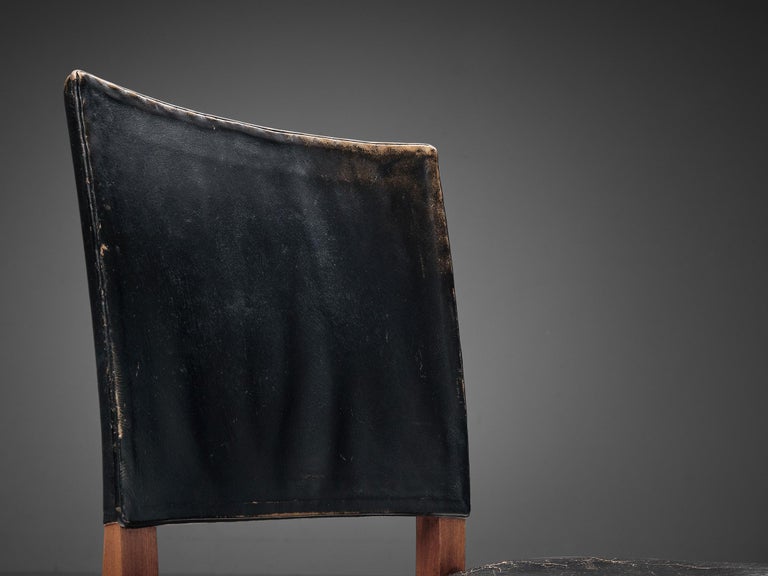
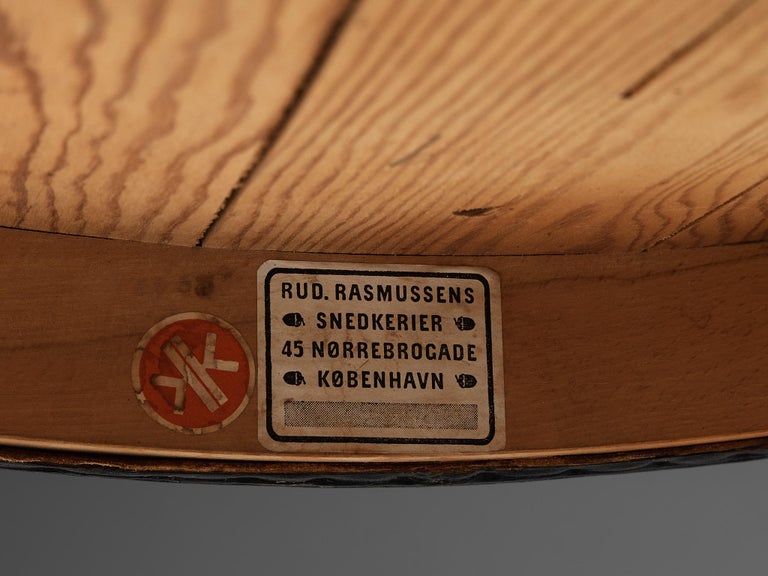
Kaare Klint for Rud Rasmussen Set of Four 'Red Chairs' in Original Leather
Kaare Klint for Rud Rasmussen, set of four dining chairs 'The Red Chair', model 3949, original patinated leather, mahogany, Denmark, designed 1928, manufactured 1930s.
These dining chairs in black leather and mahogany, were designed in 1928 and made in the thirties. Referred to as the Red Chair, they were originally conceived for the lecture hall of the Danish Art and Design Museum. Gustav Falck, the director of the National Gallery of Denmark, possessed a collection of antique English chairs in the Chippendale style dating back to circa 1750-1760. In September, the museum borrowed the "finest" chair from Falck's collection, that Ole Wanscher would examine. This research served as inspiration, leading to the completion of the design and the final model by Rud. Rasmussens Snedkerier in November 1927. Subsequently, Klint adapted the chair for his sectional tables, stimulating the need for smaller variations, available in three sizes and with or without arms. Furthermore, these chairs gained international acclaim when they were exhibited at the World Exposition in Barcelona, earning the prestigious grand prix medal in 1929. As a result of this recognition, they became known as the 'Barcelona Chair.'
Kaare Klint (1888-1954), born in 1988 in Frederiksburg, Denmark, was a Danish architect and furniture designer. From a young age, Klint was immersed in architecture. His father was the well-known architect Peder Vilhelm Jensen-Klint, who is mainly known for designing the Grundtvigs church in Copenhagen. After studying at the P.S. Krøyer’s Art School from 1907, Klint made his debut as a designer. That year, the Association of Furniture Manufacturers in Copenhagen announced that they would hold a competition for designer furniture. Klint submitted, together with Ivar Bentsen, under a code name and together they received first price. In 1924, Klint helped establishing the Department of Furniture Design at the Royal Danish Academy of fine Arts. As associate professor, and later professor, he inspired some of the greatest and most well-known Danish designers, including Hans J. Wegner and Arne Jacobsen. Klint worked and thought along a few strong principles being the importance of former styles. He believed that the only way forward was to have a deep knowledge of craftsmanship. One of his other core principles was to research functionality and have an outstanding sense of proportion, space and the human body. Overall, Klint drew inspiration from the Shakers, Chippendale and Biedermeier. Kaare Klint's style from the 20s and 30s has had a lot of influence on other designers in both Europe and the United States. Amongst others Børge Mogensen, Finn Juhl and Poul Kjærholm have taken influence from Klint. Therefore, Kaare Klint can be seen as the father of Danish midcentury design.
Kindly be aware that this item is in good, used condition, exhibiting patina and wear that are consistent with the use expected over time. For further details, we encourage you to reach out to our team of design specialists.
The mahogany type of this piece does not require an export license.
VAT within the EU: When buying or delivering an item within the EU, VAT usually applies and will be added.
Choose options








Product Details